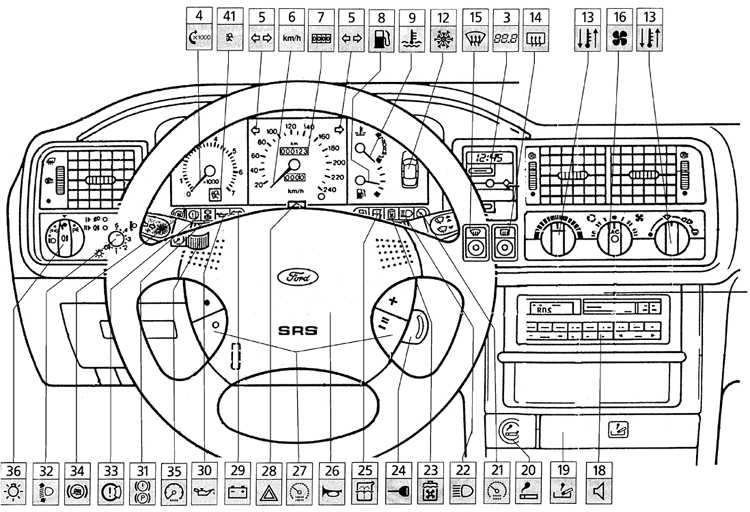Pribornaya Panelj Passat B3 1988 G Znachenie Lampochek

Interior The third-generation, known as Volkswagen Passat B3 or Volkswagen Passat 35i, was introduced in March 1988 in Europe, 1989 in North America, and 1995 in South America; it was not available in Australia. Its curvy looks were a contrast from the boxy appearance of its predecessor and owed much to the 'jelly mould' style pioneered by with the. The lack of a grille, utilizing the approach, made the car's front end styling reminiscent of older, rear-engined Volkswagens such as the, and also doubled as a modern styling trend. The styling was developed from the 1981 aerodynamic ( = 0.25) Auto 2000 concept car. At the time it was the first Passat to be built on a Volkswagen-designed platform, rather than sharing one with an Audi saloon. The Passat B3 was designed by Volkswagen's design chief, and, unlike equivalent Audi models, now featured a space-saving transversely mounted engine (a configuration from which future Passat models would retreat in 1996). A couple of weeks ahead of launch, press reports appeared that the forthcoming new Passat was known within the company as the first 'true Hahn model' ( 'erster echter Hahn'), even though had by this time already been the Volkswagen Group's chairman since 1982.
หัวเรื่องคำถาม: อยากได้ shape file จังหวัดของไทย รายละเอียดคำถาม: ผมอยากได้ shape file จังหวัดของไทย หากท่านได้พอจะอนุเคราะห์ได้จะเป็นพระคุณยิ่ง.
The message, reflecting management priorities at the time, was that whereas recent new models from Volkswagen had unapologetically appeared to be rebadged and mildly rebodied Audis, with this model Volkswagen under Hahn now had the confidence to reassert a more distinctive identity for its cars, differentiating the Audi and Volkswagen brands more persuasively from one another in the process. The car, although designated in Volkswagen's platform nomenclature, was based largely on the as used for the smaller model, but was stretched in all directions. Many components are shared directly between these vehicles. Only 4-door saloon and 5-door estate versions were available, without the option of previous models. From this generation to present time, the five-door hatchback version of the first and second generation models is no longer available. It was marketed under the Passat name in all markets; in North America, this was a first. How to videos from hotstar in pc. The fuel injected gave better performance and refinement than the previously used units.
They were mounted, and the floorpan was engineered to accept Volkswagen's ' system. Engine options were the 2.0- engine (for North America only in the GL model), 1.8-litre eight-valve and 16-valve engines (not available in North America; all CLs, GLs, and GLSs had the 2.0 16v), Volkswagen's new 2.8-litre (also used in the Golf and ) in the GL/GT (Europe) and GLX/GLS (North America) models (introduced in 1991 in Europe and 1992 in North America), and the engine (only available on the Syncro model in Canada for the North American market).
The VR6 engine gave the top-of-the-range Passat a top speed of 224 km/h (139 mph). The 1.6-litre (not available in North America) and 1.9-litre (available only in Canada and Europe) were also available as an option. As somewhat rare features for the time, the B3 Passat was optionally offered with rear, and electronically regulated (called '). These two options were available only in Europe. See also [ ] • • References [ ].

Introduction The Volkswagen Passat was marketed as the 'great big car' when it was introduced in March 1988. The B3 marked a step-change in the Passat's development, as it was the first transverse-engined Passat, no longer sharing its underpinnings with the Audi 80.
It was based largely on the Golf's underpinnings, with many components shared between the two, despite being so much larger than that car. Styling was also a radical departure, with a featureless nose that harked back to the 1981 Auto 2000 Concept car. The Passat B3 was a step upmarket for Volkswagen, and the planned hatchback version was dropped late in the development programme in order to protect sales of the top-end Golf models. The engine line-up was pretty much as before, although Audi's five-cylinder engines were dropped from the line-up - so the options were the 1.8- and 2.0-litre petrols (in 8V, 16V, and G60 forms), and from 1991, the fascinating 2.8-litre VR6.
In 1993, the B3 was facelifted to become the B4, with the main changes being new front-end styling and the arrival of VAG's then impressive 1.9-litre TDI engine. Sensible in all forms, long-lived, especially in Europe, and most notably - exceptionally roomy. Not the aspirational choice a Passat is today, but rational, and thanks to the vibrant Volkswagen scene, these Passats are rapidly gaining a following.